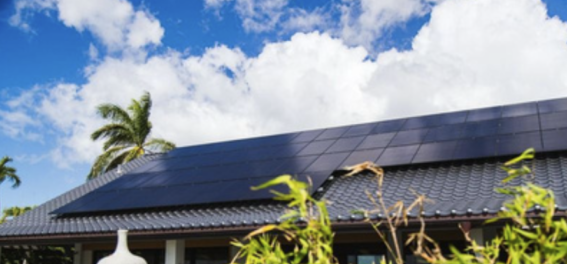If you’re currently enrolled in HECO’s Customer Grid Supply (CGS) or CGS Plus programs, you've likely received an email from HECO about transitioning to one of the new permanent programs: SDE (Smart DER Export) or SDN (Smart DER Non-Export). These programs are designed to be more flexible and financially advantageous than previous options, particularly SDE, which most customers will find beneficial.
The Benefits of Switching to SDE
Switching from CGS to SDE is a strategic move that can save you money and ensure you’re getting the most out of your solar investment. With SDE, you’re credited 13 cents per kilowatt-hour (kWh) for excess energy you send back to HECO. Unlike the old CGS program, where excess energy didn’t carry over to the next billing cycle, SDE allows this unused energy to roll over, providing you with more consistent savings.
Here’s how it works: If you produce 1,000 kWh in a month but only use 500 kWh, the remaining 500 kWh is sent to HECO. With SDE, you’d be credited for how much you buy from HECO up to your export amount. In the above scenario, if you buy 400 kWh from HECO, you'd be credited $52 and the other 100 kWh would roll over to the next month. This rollover feature is a significant improvement over the CGS program, where many customers lost the value of their surplus energy each month. In the CGS+ tariff, the export rate was $.10, so SDE is an improvement on that.
Understanding Time of Use (TOU) – Shift and Save
A critical consideration when switching to SDE is whether to enroll in HECO’s Time of Use (TOU) program, known as Shift and Save. This program divides the day into three pricing tiers:
- 9 AM to 5 PM: The lowest rate ($.1742/kWh)
- 5 PM to 9 PM: The highest rate ($.5226/kWh)
- 9 PM to 9 AM: A mid-range rate ($.3484/kWh)
While the TOU program can be advantageous if your energy usage aligns with the lower-priced hours (e.g., if you’re rarely home from 5 PM to 9 PM), most customers might find it more economical to opt out. The high peak rates during the evening hours could significantly increase your bill if you’re not careful.
If you decide to stick with Shift and Save, it's crucial to manage your energy usage carefully. For example, running high-energy appliances like dishwashers and laundry machines during the lowest rate period could help you save money. However, for most people, opting out of this program provides more straightforward billing and fewer chances for unexpected charges.
More information from HawaiianElectric.com
New Customers: What You Need to Know
For those who are new to HECO and just installing PV (photovoltaic) systems for the first time, you’ll automatically be enrolled in one of the new programs—likely SDE, as it offers the best return on your solar investment. One thing to watch out for is that new customers will also be auto-enrolled in the TOU program. However, you’ll need to manually opt out if you don’t want to be part of Shift and Save. This is an important step to avoid being locked into higher peak rates if your energy usage doesn’t fit the TOU schedule.
Final Considerations
Switching to SDE from CGS or CGS Plus is generally a smart decision that offers more flexibility and better financial incentives. However, it’s essential to carefully consider whether to participate in the TOU program based on your energy usage patterns.
For any remaining questions or personalized advice, it’s a good idea to reach out to your project developer or HECO directly. They can help you navigate these decisions and ensure you’re making the most of your solar setup.
This comprehensive guide should help you understand your options and make an informed decision regarding HECO’s solar programs. Whether you're switching from an existing program or setting up solar for the first time, knowing the ins and outs of SDE, SDN, and TOU can maximize your savings and efficiency.
-
 Hawaii SolarLast Chance to Claim the Full 30% Federal Solar Tax Credit – Act Before Dec 31, 2025LEARN MORE
Hawaii SolarLast Chance to Claim the Full 30% Federal Solar Tax Credit – Act Before Dec 31, 2025LEARN MORE -


